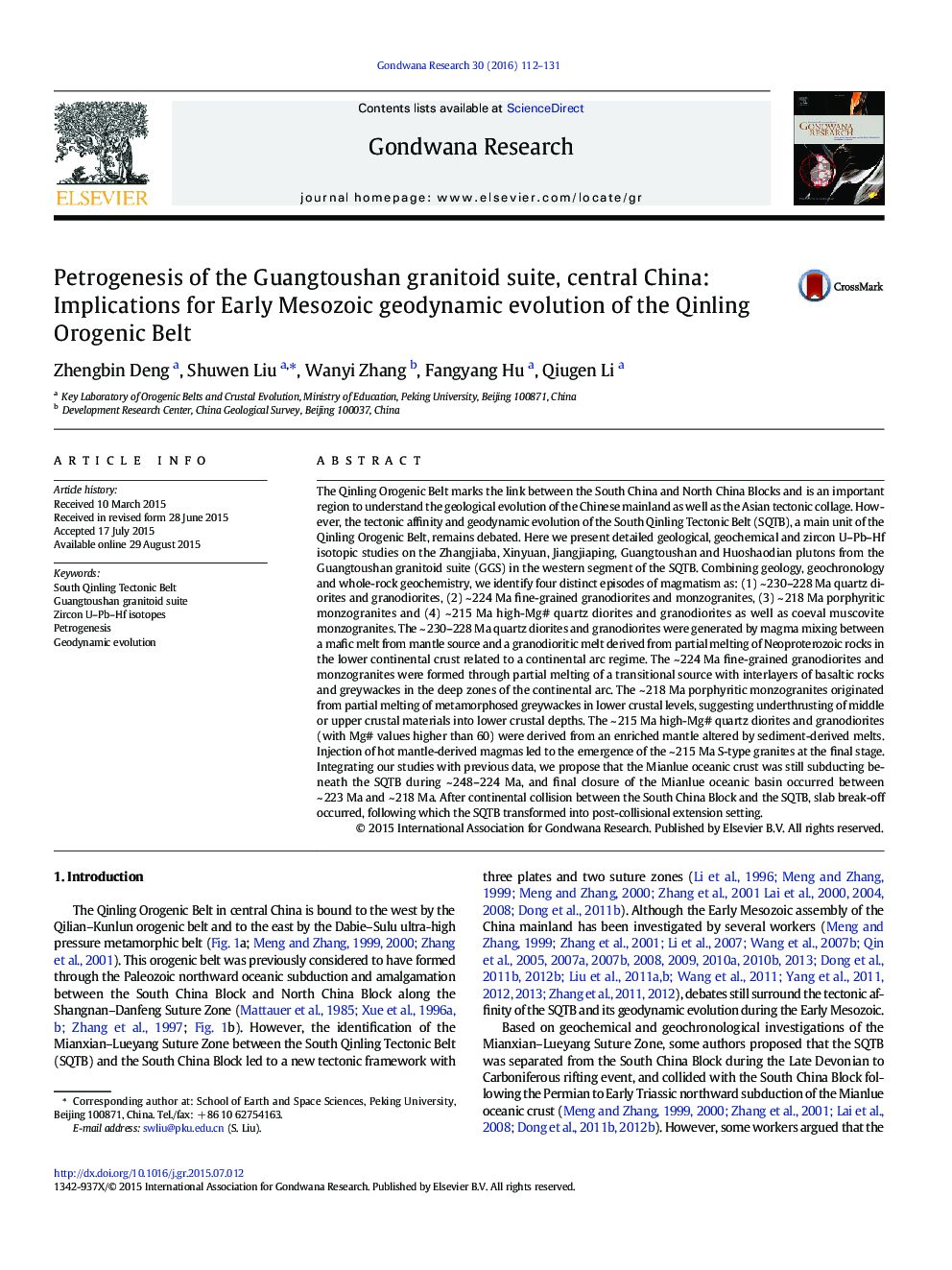| کد مقاله | کد نشریه | سال انتشار | مقاله انگلیسی | نسخه تمام متن |
|---|---|---|---|---|
| 4726658 | 1640141 | 2016 | 20 صفحه PDF | دانلود رایگان |

• Magmas were formed by interaction of multiple sources during ca. 230–215 Ma.
• Eastern and western segments of South Qinling Belt have similar crustal basements.
• Slab break-off took place after ca. 223–218 Ma closure of Mianlue Ocean.
The Qinling Orogenic Belt marks the link between the South China and North China Blocks and is an important region to understand the geological evolution of the Chinese mainland as well as the Asian tectonic collage. However, the tectonic affinity and geodynamic evolution of the South Qinling Tectonic Belt (SQTB), a main unit of the Qinling Orogenic Belt, remains debated. Here we present detailed geological, geochemical and zircon U–Pb–Hf isotopic studies on the Zhangjiaba, Xinyuan, Jiangjiaping, Guangtoushan and Huoshaodian plutons from the Guangtoushan granitoid suite (GGS) in the western segment of the SQTB. Combining geology, geochronology and whole-rock geochemistry, we identify four distinct episodes of magmatism as: (1) ~ 230–228 Ma quartz diorites and granodiorites, (2) ~ 224 Ma fine-grained granodiorites and monzogranites, (3) ~ 218 Ma porphyritic monzogranites and (4) ~ 215 Ma high-Mg# quartz diorites and granodiorites as well as coeval muscovite monzogranites. The ~ 230–228 Ma quartz diorites and granodiorites were generated by magma mixing between a mafic melt from mantle source and a granodioritic melt derived from partial melting of Neoproterozoic rocks in the lower continental crust related to a continental arc regime. The ~ 224 Ma fine-grained granodiorites and monzogranites were formed through partial melting of a transitional source with interlayers of basaltic rocks and greywackes in the deep zones of the continental arc. The ~ 218 Ma porphyritic monzogranites originated from partial melting of metamorphosed greywackes in lower crustal levels, suggesting underthrusting of middle or upper crustal materials into lower crustal depths. The ~ 215 Ma high-Mg# quartz diorites and granodiorites (with Mg# values higher than 60) were derived from an enriched mantle altered by sediment-derived melts. Injection of hot mantle-derived magmas led to the emergence of the ~ 215 Ma S-type granites at the final stage.Integrating our studies with previous data, we propose that the Mianlue oceanic crust was still subducting beneath the SQTB during ~ 248–224 Ma, and final closure of the Mianlue oceanic basin occurred between ~ 223 Ma and ~ 218 Ma. After continental collision between the South China Block and the SQTB, slab break-off occurred, following which the SQTB transformed into post-collisional extension setting.
Figure optionsDownload as PowerPoint slide
Journal: Gondwana Research - Volume 30, February 2016, Pages 112–131